Harry S. Dent Jr.'s Blog, page 79
July 17, 2017
Is The Grass Getting Greener?

 There are so many game-changers on the horizon that sometimes it’s difficult to keep up.
There are so many game-changers on the horizon that sometimes it’s difficult to keep up.
Artificial intelligence. Self-driving cars. Virtual reality. Breakthroughs in energy storage. All of these can upend the status quo and change our daily lives for the better.
But cannabis, the plant from which marijuana is derived, is in a class by itself.
It already exists.
We have the compound in a useful form. It doesn’t need enhancements, tweaks, or new formulations. Its potential simply needs to be unleashed.
I’m not talking about recreational pot, where people try to decide if they’d like to smoke, vape, or chew an edible to get high.
I’m talking about medical marijuana, which has burst on the scene just as our nation is about to feel the crush of caring for a rapidly aging population.
The demand for legal marijuana is here, it’s growing, and it will continue to rise.
As more states allow medical and recreational use of marijuana, we’ll analyze more data on how consumers can use the substance to improve their health. Consumers will change their buying patterns, creating winners and losers, and it’s all starting right now.
With greater utilization of medical marijuana, patients will find more relief and spend less than they would on expensive prescription drugs. This growth could more than double the number of jobs in an industry that already employs about 150,000 people.
It’s fascinating to watch a fresh industry grow, thrive, and offer an entire generation a viable pain remedy alternative … but is it enough to justify buying stock in a marijuana-related company right now?
In our latest infographic Is the Grass Getting Greener?, we dive deeper into these issues, and take a closer look at some of the numbers that could help or hinder the growth of marijuana as a practical investment opportunity.
There’s no question medical marijuana is an industry on the rise, but what roadblocks could be keeping investors on the sidelines… and what related opportunities are currently presenting themselves?
Rodney Johnson
Follow me on Twitter @RJHSDent

The post Is The Grass Getting Greener? appeared first on Economy and Markets.
July 14, 2017
Central Bank of the World

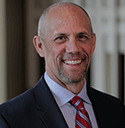 If, by chance, you’re not familiar with my work, I focus on the Federal Reserve System.
If, by chance, you’re not familiar with my work, I focus on the Federal Reserve System.
That’s the formal name for the central bank of the United States, most often referred to simply as “the Fed.” Those who are familiar with my work might even say it’s a bit of an obsession for me, and they might not be wrong.
The Fed is no small thing. It drives monetary policy, guided by a “dual mandate:”: by following a dual mandate: maximize jobs and wages and , stabilize prices..
Since the U.S. dollar is currently the world’s reserve currency, policy decisions made by the Fed impact not just the relative strength of the dollar but also influence everyone that does business with us – a group that includes basically every civilized country on the planet.
The Fed’s role here in the U.S. is pretty clear, but what about its international role?
Let’s back up a minute and pick our way through some history. At the Bretton Woods Conference in 1944, the International Monetary Fund (IMF) and the World Bank were created to help less developed nations build stronger economies.
The IMF’s role is to promote monetary cooperation between countries by stabilizing exchange rates and acting like the world’s traffic cop. The World Bank was created to lend money (with the promises or backing of the most powerful governments) for the purpose to aid underdeveloped nations feed their hungry and rise their standard of living.
That all sounds great…
In 1944, exchange rates were determined by how much gold a particular currency could buy in the open market (which did not mean currencies were backed by gold). Values were set by supply and demand, which was an efficient method to determine a currency’s true value.
The problem with this method was that central bankers couldn’t manipulate their currencies.
In the 1970s, gold was phased out as a standard to measure currency value. And, voila, central banks were free to manipulate their currencies without the penalty of having their currency automatically devalued by other banks.
If the pre-1970s method of valuing currency were in effect today, the Japanese yen would have likely fallen to near zero (in terms of gold purchasing power) because of the Bank of Japans’ version of quantitative easing (QE) over the last couple decades.
And what about the U.S. dollar? “Helicopter” Ben Bernanke, the former Chair of the Federal Reserve, with the help of Henry Paulson and Tim Geithner during their respective reigns atop the U.S. Treasury Department, wouldn’t have dared implement the Fed’s version of QE in 2008.
But back to the IMF and the World Bank. Both institutions are funded by about 200 countries, but most support comes from the U.S., Germany, France, Japan, and Great Britain. The U.S. contributes nearly 20% – but if you include loan guarantees, our taxpayers are on the hook for twice that amount!
The IMF seems to be evolving into the world’s central bank, with the World Bank as its “open market” branch. These “loans” are funded by a small amount of capital contributed by the countries that fund the IMF but are mainly funded by “credits,” which are promises by participating governments that their taxpayers will cover these loans if the World Bank’s loans go bad.
And the loans do go bad!
So back to the Fed. The Federal Reserve System is very much involved in the international financial system. Total borrowing and lending in U.S. dollars by foreign financial institutions is enormous.
And when the global financial crisis hit in 2008, the Fed was ready and willing to support them via “swap” arrangements through foreign central banks. Swaps just mean swapping worthless debt for guaranteed debt or worthless currency for dollars.
Easy and painless, right?
Remember, the Fed oversees itself and is accountable to no one. After the crisis in 2008, the Fed doled out about $16 trillion to struggling corporations and banks, most of which wasn’t paid back. The Royal Bank of Scotland and Deutsche Bank split about $1 trillion, and many other foreign entities also took part in the Fed’s giveaway.
In an October 2014 speech during the annual meeting of the IMF and World Bank, Fed Vice Chair Stanley Fischer admitted the Fed’s responsibility to the global economy because of the size and openness of our capital markets and the unique position of the U.S. dollar as the world’s leading currency for financial transactions. He did caution, however, that the Fed’s responsibility is not unbounded.
Well, $16 trillion dollars in handouts without the express approval from taxpayers seems unbounded to me! Especially when considering the entire GDP of the United States is just over $14 trillion dollars!
What could be even scarier, though, is that many of our banking leaders (current and past) think the stability of the international financial system could be best supported by a global central bank. Stanley Fischer mentioned as much in his IMF speech in 2014. He wanted to be clear, though, that the Federal Reserve is not that entity.
But is that the end-game? Or is the Fed pulling all the strings right now?
You can prepare for and profit from surprises in the financial markets, and specifically in the Treasury bond market, with Treasury Profits Accelerator.
Good investing,

Lance Gaitan
Editor, Treasury Profits Accelerator

The post Central Bank of the World appeared first on Economy and Markets.
July 13, 2017
Beware… We Face the Greatest Turning Point in October
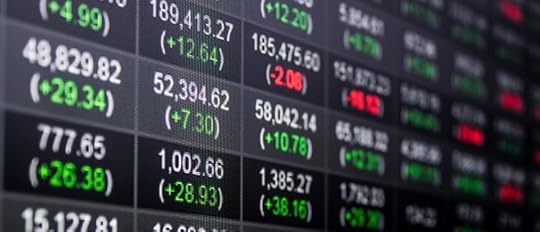

Normally the worst season for the stock market is between July and November, especially August through mid-October, with September the worst month for losses (on average, of course).
The first wave of the 1929 to 1932 crash ran from early September into mid-November, claiming a loss of 47% in just two and a half months.
This year, this time frame could be equally dangerous…
I’m a long-term forecaster, so I look to Andrew Pancholi at markettimingreport.com to fine tune the shorter-term situation. That’s not an easy task. And it’s impossible to be right all of the time. If you can nail short-term forecasts about 60% or 70% of the time, you’re a hero in this realm!
Andy has some very impressive long-term cycles, as attendees of our Palm Beach Irrational Economics Summit last October learned. But he also has some impressive shorter-term models that show some major turning points over the next few years.
A turning point can go either direction. Andy can only give an estimate of whether we’ll see a boom or a bust as the date approaches.
To date, he’s been eerily accurate!
Now, guess what?
The strongest spike for a turn point hits in October!
This is the biggest spike he’s seen over more than 20 years, and from his models, looks to be the biggest one we’ll see during the next 10.
His weekly models point specifically to around October 20.
Both of us believe that could be the top of the greatest bubble in history.

His second greatest spike of the last few decades came in late 2002, right near the bottom of the great tech wreck crash.
Andy also sees possible turning points later this month and in late January 2018.
The most likely scenario at this point – and Andy and I will continue to reevaluate as it develops – is that we see an intermediate top in the stock markets by the end of the third week of this month, with a 5% to 10% crash into late August or early September. Then we get a final bubble run into mid- to late October followed by the classic bubble burst of 30% to 50% within two to three months, into January or so.
The question is, what will be the trigger of these events? I tackle this question in the latest issue of Boom & Bust. I also look at the role President Donald Trump plays in this rally, and its inevitable reversal… the shocking shift we’re about to see in employment numbers and what that could mean for the stock market… and the biggest danger facing Europe right now.
Then our model portfolio manager, Charles Sizemore, adds a new recommendation this month to take advantage of the deflationary environment ahead.
A major peak finally looks imminent after Janet Yellen’s statement that “we won’t see another financial crisis in our lifetime.” And now Alan Greenspan has added that he doesn’t see signs of irrational exuberance… like a market that believes Trump is going to wave a magic wand and create 4% growth again isn’t irrational?! Like 29-times cyclically adjusted earnings, headed for 32 as in 1929, isn’t overvalued?!
Our experts suffer from the typical human condition: The more a trend goes up, the more we believe in it and see less risk. History has proved time and again that this view of the way of things are is always to our detriment.
This bubble looks to be in its final stages. A divergence between small and large cap stocks after the next correction will be the best confirmation.
Keep reading.

Harry
Follow me on Twitter @harrydentjr
P.S. Andy will be at the 2017 Irrational Economics Summit in Nashville. There, he’ll share all the details about what lies ahead, not only for the rest of this year, but for the next several. Be sure to reserve your seat today.

The post Beware… We Face the Greatest Turning Point in October appeared first on Economy and Markets.
July 12, 2017
I’m Surprised These Are Still Legal

 Most of our readers are regular W-2 employees working for a paycheck, and most of my recommendations in the Dent 401k Advisor, which we released to subscribers last week, are focused toward helping them.
Most of our readers are regular W-2 employees working for a paycheck, and most of my recommendations in the Dent 401k Advisor, which we released to subscribers last week, are focused toward helping them.
But for you self-employed types out there – or if you know one and want to pass along the word – there’s a much bigger world of retirement options at your disposal.
We all know that the traditional pension plan is dead.
Unless your job is unionized or you work for the government, it’s extremely unlikely that you have a traditional, guaranteed pension to take care of you in your golden years.
Well, if you’re self-employed, I have good news.
You can actually create your own traditional, defined-benefit pension… and use it to shield a shocking amount of your income from taxes.
If you work for yourself and have no employees other than your spouse, you can start with an individual 401(k) plan. You can defer $18,000-$24,000 in an individual 401(k) plan, just as you can with a traditional employer-sponsored plan.
But here’s where it gets fun…
You can combine that one-man 401(k) with a cash-balance pension plan and potentially defer another $100,000-$200,000, or possibly more, depending on your age and income level.
Cash-Balance Pension Plan
For those unfamiliar with them, a cash-balance pension plan is a little different than what you would think of as a traditional pension plan.
To start, each participant has their own separate account; the participants aren’t pooled.
Investment options in cash-balance plans are often somewhat limited, but that’s by design. As ridiculous as this sounds, the pension obligation you owe to yourself is a real liability.
So if you invested the pension plan in something risky and lost money, you would owe yourself money… and you’d actually have to pay up.
Once you retire, you can generally roll the pension into an IRA, after which point you can invest in virtually anything.
If you’re self-employed, over 40, and in the 35% marginal tax bracket or above, then the individual 401(k) and cash-balance pension plan might be perfect for you.
I’ve seen this arrangement work particularly well for doctors and freelance consultants, but it’s generally a great option for any high-income earner who’s self-employed.
At the higher tax brackets, the tax savings can amount to hundreds of thousands or even millions of dollars over time.
At Dent Research, we’re known to eat our own cooking (legally, of course; we can’t and don’t invest in specific recommendations, but certainly believe in our broader approaches.).
My colleague John Del Vecchio, who writes the Forensic Investor and Hidden Profits newsletters, does the bulk of his retirement savings via a cash-balance pension plan.
As you might expect from a professional short seller, John is extremely thorough and does his research. The fact that he uses this strategy for himself is a major endorsement.
I actually told a few folks in the office the other day: I’m surprised these plans are still legal. It’s like an IRA you can put $100,000 into every year.
You’ll definitely want to hire a professional for this, as screwing it up can create enormous liabilities for you.
As with all pension plans, there are actuarial assumptions that must be made and other arcane administrative headaches that are best left to specialists.
This is just part of what I talk about in the latest issue of the quarterly Dent 401k Advisor.
I align our 401(k) model portfolio allocations and aggressiveness with Harry’s latest outlook from the July issue of Boom & Bust. (We’re getting a little bit more aggressive – for now.)
And I also detail exactly, right down to the percentages, how you should be allocating where, self-employed or not.
We’ve just moved passed Fourth of July, which means we’re in the start of the second half of the year. This mark is a perfect time to make sure you’re on your way to maxing out your retirement plans.
So I also explain a simple, helpful exercise to make sure you are. If you’ve followed my work before, you know I believe the tax-saving benefits alone are worth it.
Click here to learn how to subscribe to Dent 401k Advisor today.

Charles Sizemore
Portfolio Manager, Boom & Bust Investor

The post I’m Surprised These Are Still Legal appeared first on Economy and Markets.
July 11, 2017
The E*Trade Baby Indicator

 The infamous “E*Trade baby” debuted during the January 2008 Super Bowl.
The infamous “E*Trade baby” debuted during the January 2008 Super Bowl.
At the time, the S&P 500 was an un-alarming 10% off its peak… but it was about to slide another 42% lower over the following 13 months.
E*Trade’s message was bold: Making money in stocks is so easy, even a baby could do it.
It was marketing genius – but, obviously, terrible investment advice.
Now, almost a decade later, E*Trade’s got a new “kid” in town.
I saw the discount broker’s latest ad on the flight home from our quarterly meeting in Baltimore. I didn’t even realize it was an E*Trade ad until the end. I was listening to music and scanning stock charts when the seatback screen in front of me caught my eye.
This young, geeky-looking kid was running around the deck of a mega-yacht like he owned it… dancing up a storm through a flock of bikini-clad beauties and, eventually, jumping off the side of the ship with wild abandon.
It looked like he was having the time of his life!
Finally, the punchline text appeared: “The dumbest guy in high school just got a boat.”
And then the close: “Don’t get mad. Get E*Trade.”
You’ve likely heard that the prevailing sentiment at the tail end of bull markets is greed.
I think it’s worse than that…
I think it’s more like envy.
When the masses get greedy, you’re close to the top.
But when the previously conservative and “prudent” investors become envious of all the foolish pigs making money… that’s when you’re really close to the top!
That’s what happened to Sir Isaac Newton in the South Sea bubble. He made money in the bull market but sold “early” out of prudence.
Then he watched a bunch of his less-educated peers make even more money after he had sold. He got envious… he got back in… and then he got crushed when it all came crashing down.
If we think E*Trade’s current marketing message is a reflection of the prevailing sentiment, we may very well be in this final “envy” stage of the second-longest bull market in history.
At the very least, we’re sure as anything in the “greed” stage.
But think about what E*Trade’s ad is really saying…
“Don’t get mad. Get E*Trade”
It sounds like they’re targeting conservative investors who are envious of the brave ones who are, indeed, making money in today’s market.
Of course, this should make us think of the popular Wall Street warning about market tops – the idea that once your cab driver tells you he’s making “easy money” trading stocks… the end is near and you should run for cover!
So, Is the End Near?
Frankly, I have no idea!
E*Trade’s “dumbest guy” may very well end up signaling the top, just like its “baby” did in January 2008.
Or maybe not… maybe this bull market goes on another couple months… even another couple years.
Again, I have no idea precisely when, or how, this all ends.
But I do know one thing…
My time-tested investment models will be ready for when it does.
You see, the beauty in systematic investment strategies – particularly ones that go “long” and “short” – is that you don’t need to predict when the “top” will come.
And that gives you a huge advantage over other investors, who will either not make any money on the way up (because they’re too “prudent,” or scared)… or lose it all on the way down (because they don’t have an exit plan, let alone a way to play the downside).
Unlike “buy-and-hold” investors, who can only play offense, and “value” investors, who are out of this “overvalued” market… we can make big money on the way up and on the way down.
We can be “greedy” while the getting’s good, making everyone else green with envy.
And then, when everything finally begins to unravel, my models are designed to switch into defensive markets, and even make big profits on the downside.
Bottom line: You’ve got to have a system to survive in this boom-and-bust market.
Once you do, I’m confident you’ll stop guessing and worrying about the next impending “top.”
E*Trade’s “dumbest guy bought a boat” commercial – and common sense – tells us the top may be close.
Whether it is or it isn’t… I have proven market-timing models that will adapt, finding profits on both sides of the market.

Adam O’Dell
Editor, Project V
Follow me on Twitter @InvestWithAdam

The post The E*Trade Baby Indicator appeared first on Economy and Markets.
July 10, 2017
Saying Goodbye to the Hotel California…

 Not everything about my recent move from Florida to Texas was tough. I didn’t enjoy the packing and cleaning, or the unpacking and more cleaning. But there was one thing that made me smile.
Not everything about my recent move from Florida to Texas was tough. I didn’t enjoy the packing and cleaning, or the unpacking and more cleaning. But there was one thing that made me smile.
I kicked my storage unit to the curb.
Five years ago we decided to downsize. There was no way to put 4,000 square feet of furniture into 2,100 square feet of space. We made tough decisions on what to keep and what to give away or sell, but in the end we had a few items that had no home in the new house, but we couldn’t part with.
It all came down to a loveseat.
My in-laws had refinished an antique loveseat and given it to my wife when she first went out on her own. It’s a nice piece. But there was no logical place for it in the new house, and (obviously) we couldn’t get rid of it. So I bit the bullet and rented a storage unit.
“It’s fine,” I told myself. “We’re adding on to the house, so it’s short term.”
But the guy who worked at the storage place new better. When I signed up and mentioned that I’d be there about six months, he smiled.
“Everyone says that,” he told me.
We never added on. And we never emptied the unit. What did happen was $100 per month for exactly five years.
That antique loveseat cost me $6,000. I don’t think I could sell the thing for more than $200-$300, but as I tell my wife, the piece is priceless because it’s important to her. I didn’t get this far along in my marriage without learning a few things.
Storage is like the Hotel California. You can check out, but you can never leave. If you have a unit – or two – chances are you’ve had them for years, and there’s no end in sight.
We sit at a strange crossroads when it comes to stuff and storage. The Boomers are the richest generation in history, and have collected a bunch of things. But they’re getting older…
As they move to one-story houses and 55-and-over communities, they’ll have to make choices. Do they chuck everything that doesn’t fit in the new place, or stick it in storage so they can pass it down? I’m betting on storage. It puts off the hard decisions and the pain is minimal.
So the explosion in self-storage units, from just the old Public Storage (NYSE: PSA) locations and mom-and-pop stores to fast-growing companies like Extra Space Storage (NYSE: EXR), will most likely continue in the years ahead. (EXR’s latest quarterly data reported a 14.6% year-over-year increase in revenue, and the real estate investment trust’s annual dividend yield is 4.03%.)
The industry plays on the emotions of Americans that get pretty attached to stuff and can carry the added expense.
For investors that like the steady income generated by such companies, this is good news. But as my personal example shows, over time the personal expense of owning a storage unit adds up.
Recently, a friend in Vegas (thank you, Ken!) showed me another way to attack this problem. He, too, had rented storage space, and was paying a pretty penny every month just to keep stuff. As his monthly expense climbed over $1,000, he decided he’d had enough.
He searched his neighborhood, found a small home not too far from his house, and bought it. After slight modifications, he’s turned it into a glorified storage unit, although it comes complete with a kitchen and bathrooms.
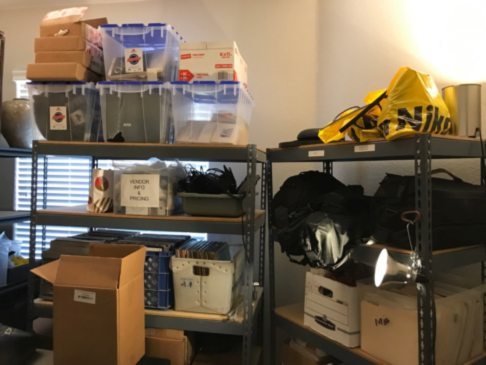
A photo from my friend Ken’s “storage house.”
He even carved out some space for his wife to have an office, ridding himself of another monthly expense!
Taking this approach involves a few variables.
My friend bought the small home for cash, so he doesn’t have to pay debt service, although he still must cough up for association fees, taxes, maintenance, and upkeep. But he participates in the capital fluctuation on the home.
Essentially, he got rid of a monthly expense (storage) and turned it into a useful investment (real estate). It’s as if he owns a rental in a nice neighborhood and is leasing it to himself. Brilliant!
Not everyone can do this, of course, but just think of the possibilities.
In addition to using the property for storage and a small office, it could also serve as guest quarters, particularly for adult children that come home for either a brief or extended stay.
With my last college kid home for the summer, it crossed my mind that if I had such a unit nearby, I wouldn’t wake up to the front door opening at 1 a.m., find half of my groceries gone, or have to play Tetris with the cars in the driveway. And when out-of-town guests visit, it’d be an automatic hotel.
Before you start paying closer attention to “For Sale” signs on your daily commute, consider that real estate prices are quite high, while incomes remain stagnant. Now is not the best time to jump into the game if you can’t stay for the long haul.
(Perhaps a strategy like Charles’ Peak Income service would be more feasible for you to
But if you can create your own storage unit and own it for the foreseeable future, then this could be a great option.
Eventually, the Millennials will buy homes in droves, wanting to put down roots for their young families and chase the American Dream, which should push prices higher in the late 2020s.
That might just give you enough time to figure out what to do with all that stuff.

Rodney Johnson
Follow me on Twitter @RJHSDent

The post Saying Goodbye to the Hotel California… appeared first on Economy and Markets.
July 7, 2017
Why You Need to Know About “Pro Forma” Versus GAAP Earnings
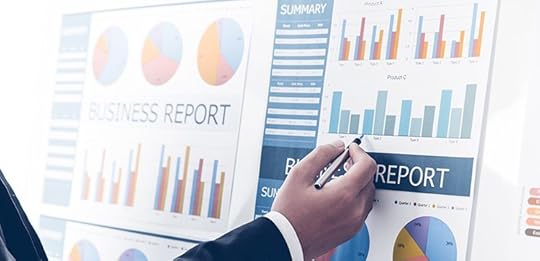
 I’m a forensic accountant, so I love earnings season.
I’m a forensic accountant, so I love earnings season.
Four times a year, companies release their financial and operating numbers to the public. It can be chaotic, even though you could all but set your watch to it.
It’s a regular market mover. When you hear about companies that meet, beat, fell short of failing, or, yes, cheated “expectations,” it’s all about the quarterlies.
For people like me who dig through the numbers – whether it’s to find the tucked-away gems of the market like I do in Hidden Profits, or to root out the Potemkin Village companies like I do in Forensic Investor – earnings season is crucial.
We’re on the brink of the next big data release, so dive into some of the numbers with me.
Recent reports from CNBC, USA Today, and other news outlets suggest that the coming earnings season could be surprisingly strong for U.S. stocks – basically, a continuation of the market rally that began after the November election. They further assert that there’s still too much pessimism about owning stocks and that bodes well for future returns.
I’d like to use a highly technical term in response, if you don’t mind: Hogwash.
According to CNBC, earnings are up 12% versus the same quarter a year ago. While earnings may appear to be strong, they are increasingly a mirage as we enter the ninth year of this bull market.
More and more companies are resorting to “pro forma” results versus Generally Accepted Accounting Principles (GAAP). And the GAAP is widening. By 2015, GAAP profits were 25% below “pro forma” results. That’s the largest disparity since the bull market began.
Meanwhile, 75% of companies beat earnings estimates. But only 60% topped revenue forecasts. What’s more is that revenue figures can be and often are manipulated as much as bottom-line results. There are numerous ways to pull the wool over investors’ eyes and show top-line growth that’s nothing more than accounting fiction.
Although second-quarter revenue growth will certainly strengthen the bulls’ resolve, it’s the quality of that revenue growth that matters.
Unfortunately, most investors will have no clue about quality. In this era of 140-character sound bites, you have to dig deep into the company’s regulatory filings to determine if the reported numbers are true and sustainable.
My own earnings quality software is flashing more signs of trouble than at any period in recent memory – and I’ve worked through my share of crashes and busts.
Market sentiment and valuations are also frothy.
For example, the Ned Davis Research sentiment composite, which combines numerous market polls, stands at 67.8. Historically, sentiment in excess of 61.5 is too optimistic, with annualized returns of just 2.7% after that level’s been breached. That’s barely above the S&P 500 dividend yield.
Sentiment recently topped out at 73.4 – history tells us it’s never been profitable to own stocks at these levels.
A few people are less bullish than a month or two ago, but sentiment has yet to normalize. Many of the market’s recent gains could quickly be wiped out should the sentiment pendulum swings the other way.
Then you have valuations. There have been suggestions that there’s a “new normal” of higher price-to-earnings ratios than the market has historically witnessed. That could be true, although no one knows what level that might be.
And every time I hear “this time it’s different,” I run the other way.
It’s never different this time. Markets change, the companies that lead the market change, the operators change, but human nature never changes.
Markets tend to overshoot. In both directions.
The median price-to-sales ratio on the S&P 500 is the highest ever, at a time when more and more companies resort to accounting gimmicks so their own numbers to satisfy Wall Street’s short-term quarterly expectations.
While the market could certainly climb higher than these levels, the risk/reward relationship becomes less favorable each passing day.
If history is any guide, about 75% of the companies in the S&P 500 will “beat” earnings. That means very little, however, if management goosed the numbers through accounting chicanery and overstated long-term sustainable cash flow. It’s been going on for decades, with increasing use in recent years.
Unfortunately, it’s the individual investor that’s last to know and gets caught holding the bag.
Be careful out there, and be vigilant about protecting your capital and managing risk.

John Del Vecchio
Editor, Hidden Profits

The post Why You Need to Know About “Pro Forma” Versus GAAP Earnings appeared first on Economy and Markets.
July 6, 2017
When It Comes to Investments, Don’t Listen to the Daily News
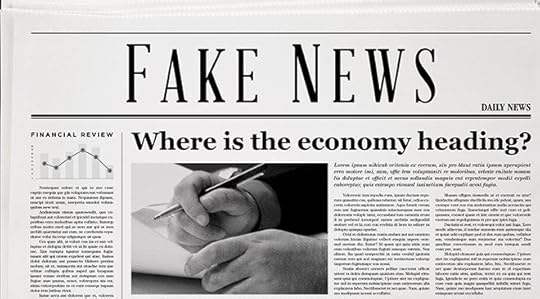
 The hot topic in politics of late is “fake news”… like the media is the villain.
The hot topic in politics of late is “fake news”… like the media is the villain.
Sometimes they are. MSNBC obviously has a clear leaning towards the left, and Fox towards the right. That’s why I prefer to watch some CNN.
But I think the media generally does a good job of trying to find the truth, even if from a biased side. They ask hard questions and uncover scandals. A free press has always been a cornerstone of democracy, and should be allowed to do its job.
My biggest gripe isn’t with the media. Instead, it’s with special interests.
The media does everything and anything it can to create controversy and gripping news to satisfy the audience’s (our) need for drama. So, reporters and journalists, anchors and stations find the most bullish analyst and pit him/her against the most bearish… or they talk to the more conservative politician, then the more liberal.
They do this all day, every day. If they didn’t, they’d be out of business in a flash.
But the result is confusion. If you were to just listen to the media all day, you’d have all these conflicting arguments and no idea what to do with any of them!
Each special interest or company is just trying to promote their shtick. They’re not about the truth. Instead, they want to market themselves or their cause. They are the true culprits of fake news. They find selective facts to bolster their interests.
Worse, market analysts tend to pile into trends late and get out late. They’re the worst type of “talking heads” to listen to when it comes to investment advice.
Hey, I listen to the news daily to keep up on interesting articles and experts that I can bring to you in our newsletters. But I don’t believe what most of these people say, or take them at their word!
At Dent Research, we’re about the truth. We even piss off our own subscribers at times by saying things they don’t want to hear. That’s just tough. Like it or not, we’re not about sugarcoating or fake news.
We’re about the truth, and what you must do with the information and predictable cycles that most people ignore… as they don’t like the fact that the world is cyclical.
I have a hierarchy of proven long-term indicators that I use as my starting point in the hunt for the truth. Then I identify shorter-term indicators that can warn of key turning points – although that is, by nature, less forecastable.
For shorter-term trading systems – which are critical in these increasingly volatile markets, where buy-and-hold simply doesn’t work anymore – our experts like Adam O’Dell and Lance Gaitan have proven systems for profiting.
None of us base our forecasts and logic on the daily news or media drama, and certainly not public opinion, which is more often than not wrong.
If you’re looking for the truth, and then a way to profit from that information, keep reading Economy & Markets.

Harry
Follow me on Twitter @harrydentjr

The post When It Comes to Investments, Don’t Listen to the Daily News appeared first on Economy and Markets.
July 5, 2017
Trump Trade Breaks in 2017

 The first half of 2017 is over… and, boy, was it one for the history books!
The first half of 2017 is over… and, boy, was it one for the history books!
American politics dominated the global discussion, as speculation ran rampant over who would emerge as the winners and losers of a Trump presidency.
Surprisingly (or not!)… the media’s storylines have likely led naïve investors into some of the worst-performing investments so far this year.
Essentially, everything that was up “huuuuge” from Election Day through year end… is now lagging behind. And everything that struggled to digest the reality of Trump’s win… is now leading the pack.
I’m taking some snarky enjoyment in the confusion of the masses.
For one, I’ve told you often that reading the news is the worst thing you can do for your investment portfolio.
And when you look at the performance of my research trading services – Cycle 9 Alert and 10x Profits – you can see plainly how my simple, systematic approach to investing is far better than taking tips from CNBC.
My Cycle 9 Alert readers are averaging a 41% profit, per trade, so far this year. We’ve capitalized on a number of “odd” opportunities, ones that flew in the face of the media’s storylines.
My 10x Profits readers, too, have killed it in this crazy market. By trading what I call “volatility booms and busts” – which we play with just two ETFs – we’ve milked a 20% profit from the market’s wild swings.
Both of my strategies are highly flexible, being “tactical” and “short-term” in nature.
Let me show you why that’s been particularly helpful this year…
Trump’s bravado, essentially, led everyone to believe that the United States was about to take over the world (as if we aren’t already top dog).
That expectation can be seen clearly in the performance of major markets, between Trump’s November 8 election win and the end of 2016.
First, the U.S. dollar soared. It gained nearly 6% in under two months – a huge move for a major currency. All other global currencies were down over the same time.
Second, anticipating the 3% to 4% GDP growth Trump had promised, U.S. Treasury yields jumped more than 30%. That sent U.S. Treasury bond prices more than 8% lower.
No one was interested in safe yield. Instead, everyone piled into U.S. small-cap stocks, which gained a whopping 14% in two short months.
Meanwhile, global markets got left in the dust during the first two months of the so-called “Trump Rally.” World stocks gained a measly 1.3%. Emerging market and Chinese stocks lost between 5% and 6%.
And Mexican stocks, with all that “wall” talk, got crushed like maize in a tortilla press. They lost 16% in the wake of Trump’s win!
There was one foreign beneficiary of Trump’s rhetoric. Russian stocks gained almost 18% in sympathy with the cozy relationship that was, at that time, budding between Trump and Putin.
But outside of Russia, U.S. markets completely dominated global markets in the immediate aftermath of Trump’s win.
And then, in 2017, that trend completely reversed.
Year to date…
The U.S. dollar is down more than 7%. All foreign currencies are positive.
U.S. Treasury yields are falling, with 3-4% GDP growth looking unlikely.
U.S. small-cap stocks are up just 4%, while emerging markets are up 16%.
Oh, and Mexican stocks… they’re up 24% this year – the best of the bunch.
And Russian stocks… they’re down 12% – the worst of them all.
What an epic reversal of fortunes, right!?
Clearly, investors bought the media’s initial storylines – “hook, line and sinker” – in the immediate aftermath of Trump’s election. And, indeed, hopping a ride on the early stage of that Trump Rally was quite lucrative.
But any investors who stubbornly stayed invested in those trends have been sorely disappointed in 2017.
Everything that was working in late-2016… is now broken. And everything that was sucking wind… is now leading the pack!
And if you learn nothing else from this, I hope it drives home the point that this is not a “buy-and-hold” market we’re in.
Yes, the bull market is alive and well (for now).
But you can’t just buy anything… nor hold it indefinitely.
Instead, you should be looking to use simple, “tactical” strategies – ones that position you in the strongest markets at any given time… ones that get you in and get you out, with handsome profits, before the market reverses.
Oh… and stop reading the news!

Adam O’Dell
Editor, Project V
Follow me on Twitter @InvestWithAdam

The post Trump Trade Breaks in 2017 appeared first on Economy and Markets.
July 4, 2017
The Declaration of Independence is Nothing… and Everything
[image error] The Declaration of Independence wasn’t signed on the Fourth of July.
The Declaration of Independence wasn’t signed on the Fourth of July.
The Second Continental Congress declared independence from the British Crown two days earlier, and John Adams, one of the contributors to the document that made it official, thought that July 2 would be the day of celebration for years to come. He wrote as much to his wife in a letter.
Congress approved the Declaration’s final text on July 4, and so we celebrate today, yet the document wasn’t signed until August 2, 1776.
There are a few dates on which we could gather every year to set off fireworks, grill, and remember our history, but my bigger question is why do we celebrate this document in the first place?
It doesn’t note a famous battle. Or the first shot in the war. And certainly not the last. It’s not even the document that governs our lives.
The Boston Tea Party on December 16, 1773 marked the first major act of rebellion against Great Britain. And the first Revolutionary War battles were at Lexington and Concord on April 19, 1775, more than a year before the Continental Congress developed the Declaration of Independence.
The war lasted eight long years, and ended on September 3, 1783. The Continental Congress adopted the ill-fated Articles of Confederation on November 15, 1777, and all 13 colonies ratified them on March 1, 1781.
The U.S. Constitution, which replaced the Articles of Confederation, was ratified on June 21, 1788 and went into effect on March 4, 1789.
We’ve got a ton of dates we could celebrate, and yet we choose the one that marks the approval of a document that did not signal the beginning or end of hostilities, and did not outline a form of government.
What’s more, dare I say it, the Declaration of Independence is not original (which Thomas Jefferson, its primary author, never claimed it to be).
What makes the Declaration so compelling is that it crystalizes a collision between the powers of men (meaning all people) and the power over men.
This fight had been brewing a long time. Until that July 2, or July 4, 241 years ago, tyrannical monarchs and benevolent leaders held ultimate power over restive populations, who were coming to understand the nature of humanity.
That birthright was a made up thing. And just as it was contrived, it could be deconstructed.
The same was true of most stations and privilege. Upon careful examination, it was clear that there were just a few things that created the foundation of humanity, all of which stem from our self-determination. The Congressmen outlined these philosophical points in the text of the Declaration.
Jefferson described our inalienable rights to life, liberty, and the pursuit of (not the finding of, but the searching for) happiness. He likely lifted this idea from English philosopher John Locke, who’d written on the pursuit of happiness in his An Essay Concerning Human Understanding almost a century before.
But Jefferson and his co-Committee of Five members that contributed to the document – Adams, Ben Franklin, Roger Sherman, and Robert Livingston – went further.
They described how such rights were bestowed upon mankind by the Creator, could not be rightly abridged, and that the role of government was to protect those rights.
And that’s the money phrase.
We suddenly had a group of men willing to die for the right of self-determination, a right they believed was a natural part of existence. What’s more, they saw government not as a birthright or entity to be served, but as an institution that when properly constructed served every man by protecting his rights.
The pieces weren’t novel, but putting them together and signing the document with the blood of revolution was a quantum leap forward.
And not everyone agreed to take up the cause.
Only 45% of the colonists supported the revolution. Twenty percent were loyal to the crown, and the rest stayed out of it.
There’s an old adage about revolution. It’s always treason… unless the revolutionaries win.
I like to think that if I lived among the colonists I would have joined them in the fight. But I can’t know.
Would I leave my family back on the farm to fend for themselves while I went to war for a fledgling country and a new method of governance? Sounds questionable.
I’m thrilled they made that choice, as are many people on the planet, both here in the United States and abroad. Our ancestors proved that individual rights aren’t just a “thing.” They proved that everyone has dignity by virtue of existence, and government can be wrought to serve men.
Our history isn’t perfect. Those before us didn’t recognize rights extending to everyone for many years, and there’s always more we can do. But they started the ball rolling and gave us a fabulous base on which to stand.
And they did it with a document that noted not a single battle or major event in the conflict. Instead, it noted something bigger – the principles of the future.
How long would it have taken to achieve self-governance if it didn’t happen in the Colonies in the late 1700s? What group would have led the charge, opening the door for future generations?
Seeing past their faults, the Founding Fathers should be honored for their incredible contribution to our nation, and to all of mankind.
Happy Fourth of July!

Rodney Johnson
Follow me on Twitter @RJHSDent

The post The Declaration of Independence is Nothing… and Everything appeared first on Economy and Markets.




